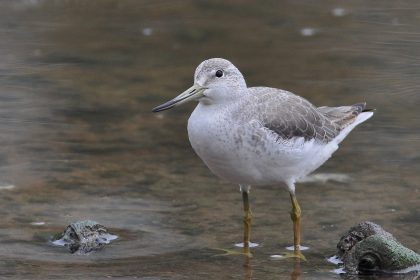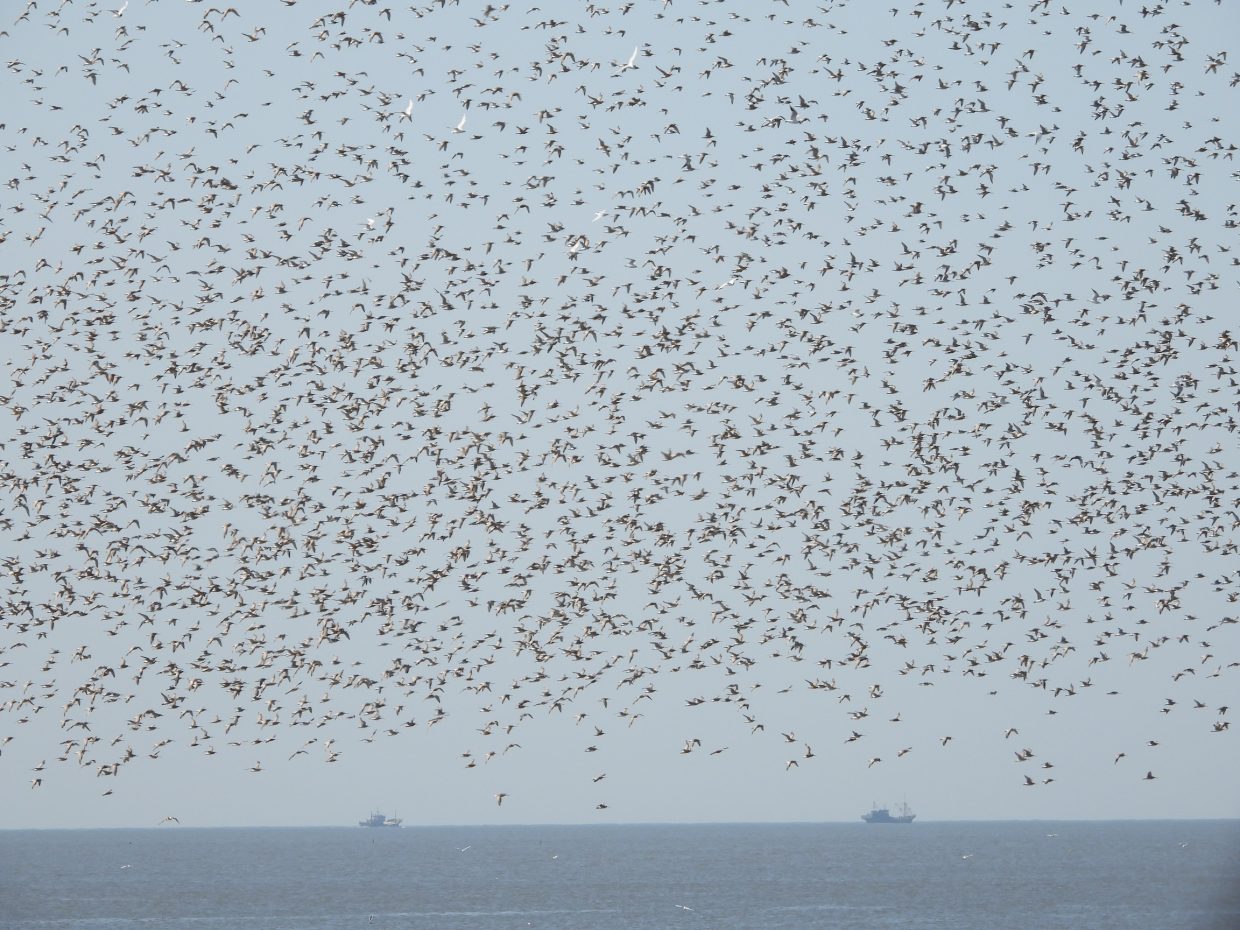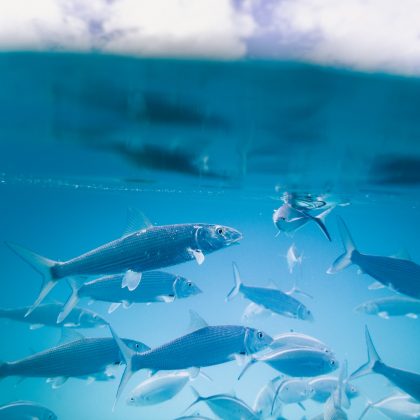Conserving migratory waterbirds in the Yellow Sea
Over 50 million waterbirds of more than 200 species migrate along the East Asian-Australasian Flyway (EAAF) each year. However, many of their populations have declined severely in recent decades. Almost one-third of the global human population lives along the seaboards of East and Southeast Asia. The main driver of waterbird declines – as well as the collapse of fisheries and loss of vital ecosystem services – is coastal land reclamation for agriculture, industry and urban development. Over the past 50 years, up to 51% of coastal wetlands have been lost in China, 40% in Japan and 60% in the Republic of Korea.

A higher number and proportion of waterbird species are globally threatened in the EAAF than in any of the other seven major flyways of the world. The impact of habitat loss on these birds was illustrated by monitoring shorebirds at Saemangeum tidal flat in the Republic of Korea, which was isolated from the eastern Yellow Sea in 2006 as part of a large-scale reclamation project. Peak numbers recorded at Saemangeum and the nearby Geum Estuary after project completion were 74% below those recorded in 2004 and 2005, and at Saemangeum shorebird abundance declined by over 95%. Other key threats to waterbirds and their habitats in the EAAF are human disturbance, invasive Spartina cordgrass, entrapment in nets, deliberate poisoning, and collisions with (or displacement by) wind turbines and other structures.

Despite these threats, numerous large and rich intertidal wetlands remain along the Yellow Sea coastline, which are essential staging sites for waterbirds to replenish their fat stores during migration to fuel their long, energetically costly flights. Each species uses a different suite of wetlands during its northbound and southbound migrations, so it is essential to protect a comprehensive and complementary network of sites throughout the Yellow Sea. Surveys of key sites in China have found that the coast of southern Jiangsu Province is the main stopover and moulting site for the highly threatened Spoon-billed Sandpiper and Spotted Greenshank. Yalu Jiang in Liaoning supports the largest known migratory staging populations of Bar-tailed Godwit, Great Knot and Far Eastern Curlew, while the Luannan coast in Hebei is critical for Red Knot. Site protection and habitat management are vital at these and other key Yellow Sea sites, including under the Chinese Government’s recently enacted ‘Ecological Protection Red Line’ policy. The outstanding universal value of the wider Yellow Sea was reflected in the recent inscription of several wetlands as UNESCO World Heritage sites.

As tidal flats and marshlands along the Yellow Sea coastline have been reclaimed, artificial wetlands have become increasingly important. A study at the Yellow River Delta in Shandong Province found that aquaculture ponds, paddyfields, canals, reservoirs and saltpans are generally not as rich in waterbirds as the adjacent natural wetlands, but they provide important secondary habitat and are the preferred habitat for a few waterbird guilds. An important and growing population of the threatened Oriental Stork nests on pylons and artificial poles at this site. The Nanpu saltpans in Hebei Province are one of the largest saltpan complexes in the world, where over 90,000 waterbirds have been counted foraging and roosting on both their northward and southward migrations.
Over the past two decades, knowledge of migratory waterbirds in the EAAF has been transformed by surveys and scientific research, such as the annual monitoring of Black-faced Spoonbill and Spoon-billed Sandpiper, and a study of Red-crowned Crane food sources at the Yellow River Delta. Tracking of individual birds has revealed the connectivity between Yellow Sea coastal ecosystems and other parts of the region. Spoon-billed Sandpiper habitat modelling has predicted its distribution, including potential new sites meriting investigation, notably in Borneo, Sulawesi, India and the Philippines. Many major gaps in knowledge remain to be investigated, including to improve understanding of how migratory waterbirds utilise their key stopover sites, and how these sites can be managed to counter threats and provide the optimal feeding and roosting habitats.

All of these topics are covered in more depth in this month’s eighth centenary collection of BCI papers, made freely available by Cambridge University Press for a limited period to mark the 100th anniversary of BirdLife International. The release of this particular collection coincides with the 14th Meeting of the Conference of the Contracting Parties to the Ramsar Convention on Wetlands (COP14), in Wuhan, China and Geneva, Switzerland, from 5 to 13 November 2022.
Mike Crosby, Asia Regional IBA Coordinator, BirdLife International
Photo credits: Ding Li Yong, Nelson Khor and Tan Gim Cheong






